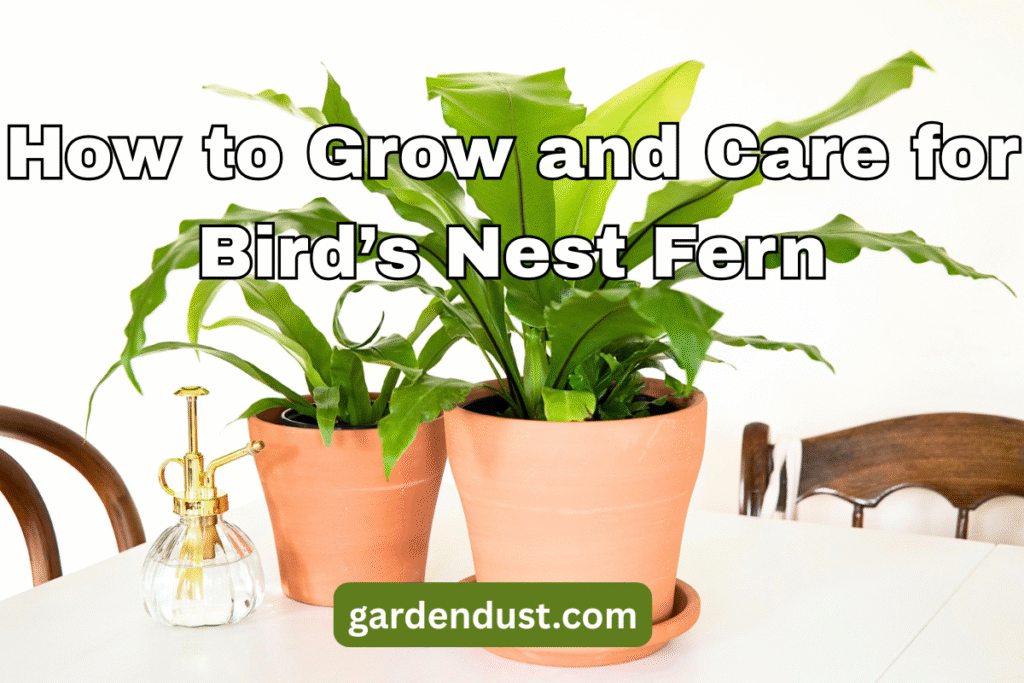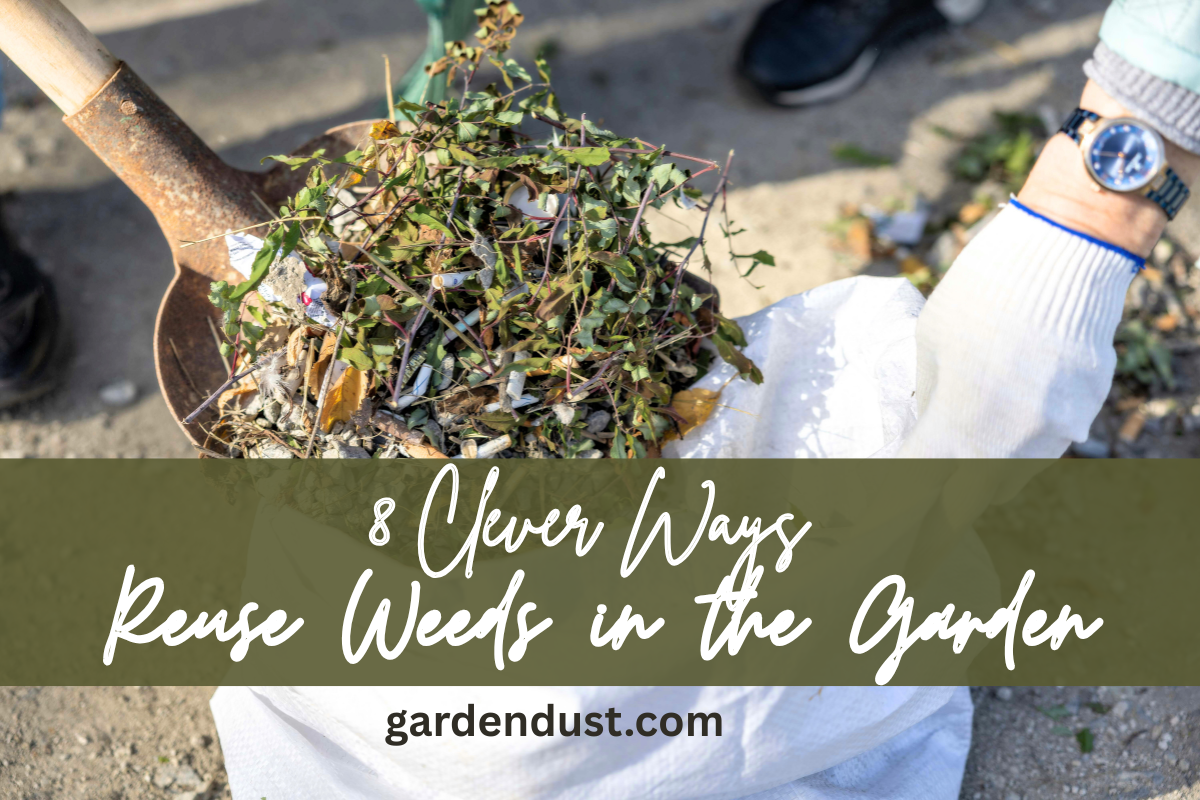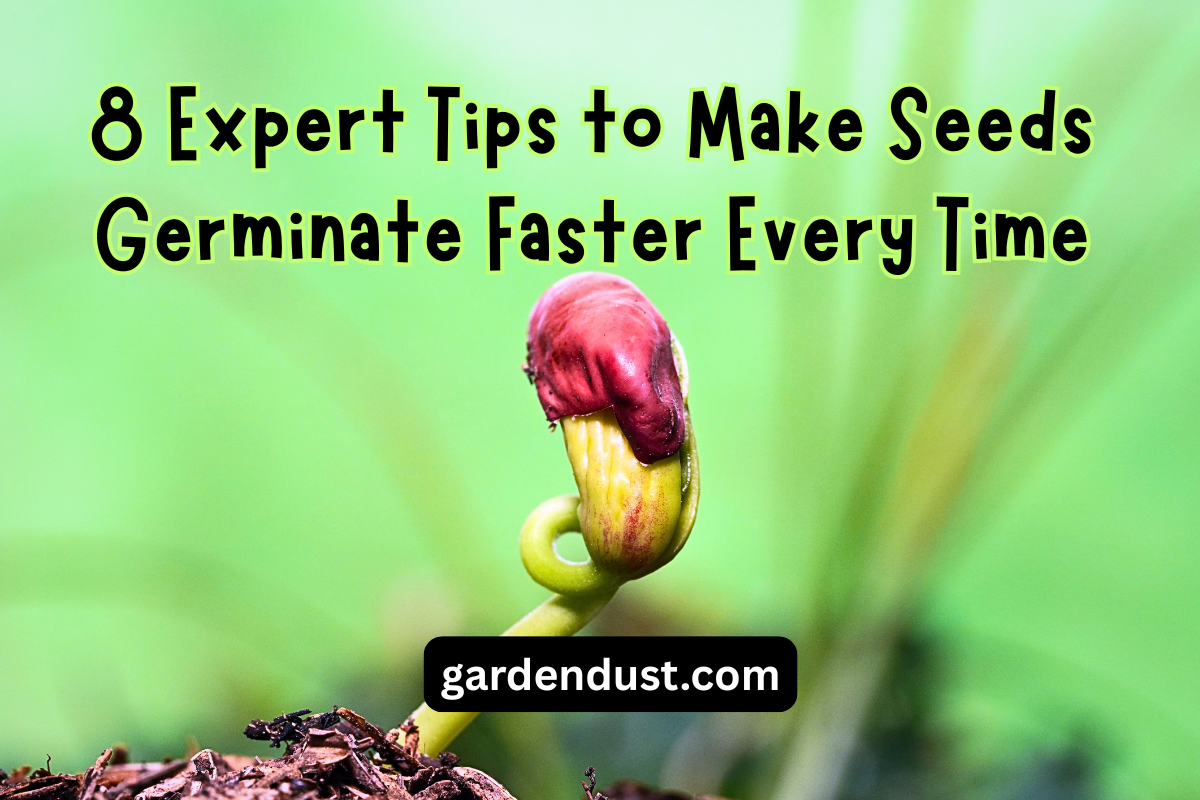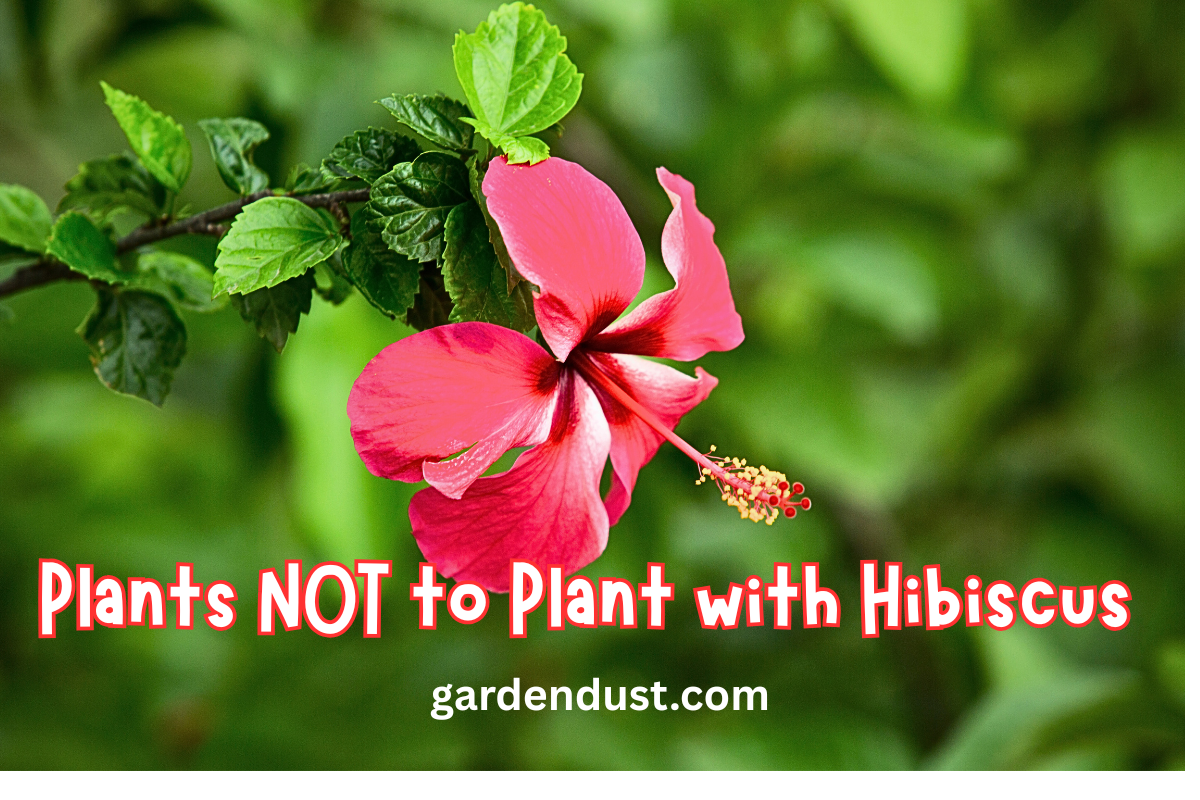Bird’s Nest Fern Care Guide
Asplenium nidus – Complete Growing & Care Instructions
:max_bytes(150000):strip_icc()/grow-asplenium-nidus-ferns-1902716-02b-0bc442544fce421a9408c321b1a51148.jpg)
Plant Overview
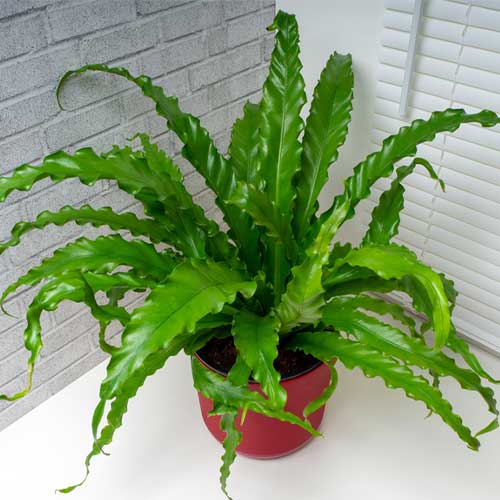
About Bird’s Nest Fern
Scientific Name: Asplenium nidus
Common Names: Bird’s Nest Fern, Nest Fern
Plant Type: Epiphyte Fern
Native to: Asia, Australia, Africa
Growth Rate: Slow to Moderate
Indoor Size: 2 feet tall and wide
Outdoor Size: 3-5 feet tall, 2-3 feet wide
Fun Fact: Bird’s Nest Ferns are epiphytes in nature, growing on other plants and deriving nutrients from organic matter rather than soil!
Essential Care Requirements
Light Requirements
IDEAL
Bright, indirect light
ACCEPTABLE
Partial shade
AVOID
Direct sunlight
Best Windows: North or East-facing windows provide ideal lighting conditions.
Watering Guidelines
Watering Schedule
- Every 1-2 weeks during growing season
- Reduce frequency in winter
- Check top inch of soil before watering
Important Don’ts
- Never water directly into the center
- Avoid waterlogged soil
- Don’t let soil completely dry out
Climate Conditions
Temperature
Ideal Range: 60-80°F (15-27°C)
Minimum: 50°F (10°C)
Avoid: Cold drafts and heating vents
Humidity
Preferred: High humidity (50-60%)
Best Locations: Bathroom, kitchen
Boost Humidity: Pebble tray, humidifier
Soil Requirements
- • Peat-based potting mix
- • Well-draining soil
- • Rich in organic matter
- • Slightly acidic pH
- • Loose, aerated texture
Fertilizing
- • Monthly during spring/summer
- • Balanced liquid fertilizer
- • Dilute to half strength
- • Apply to soil, not fronds
- • Stop feeding in winter
Common Problems & Solutions

Yellow Leaves
Leaves turning yellow from bottom up
Causes: Overwatering, too much direct sun
Solutions:
- • Reduce watering frequency
- • Move away from direct sunlight
- • Check drainage holes
- • Repot if soil is waterlogged
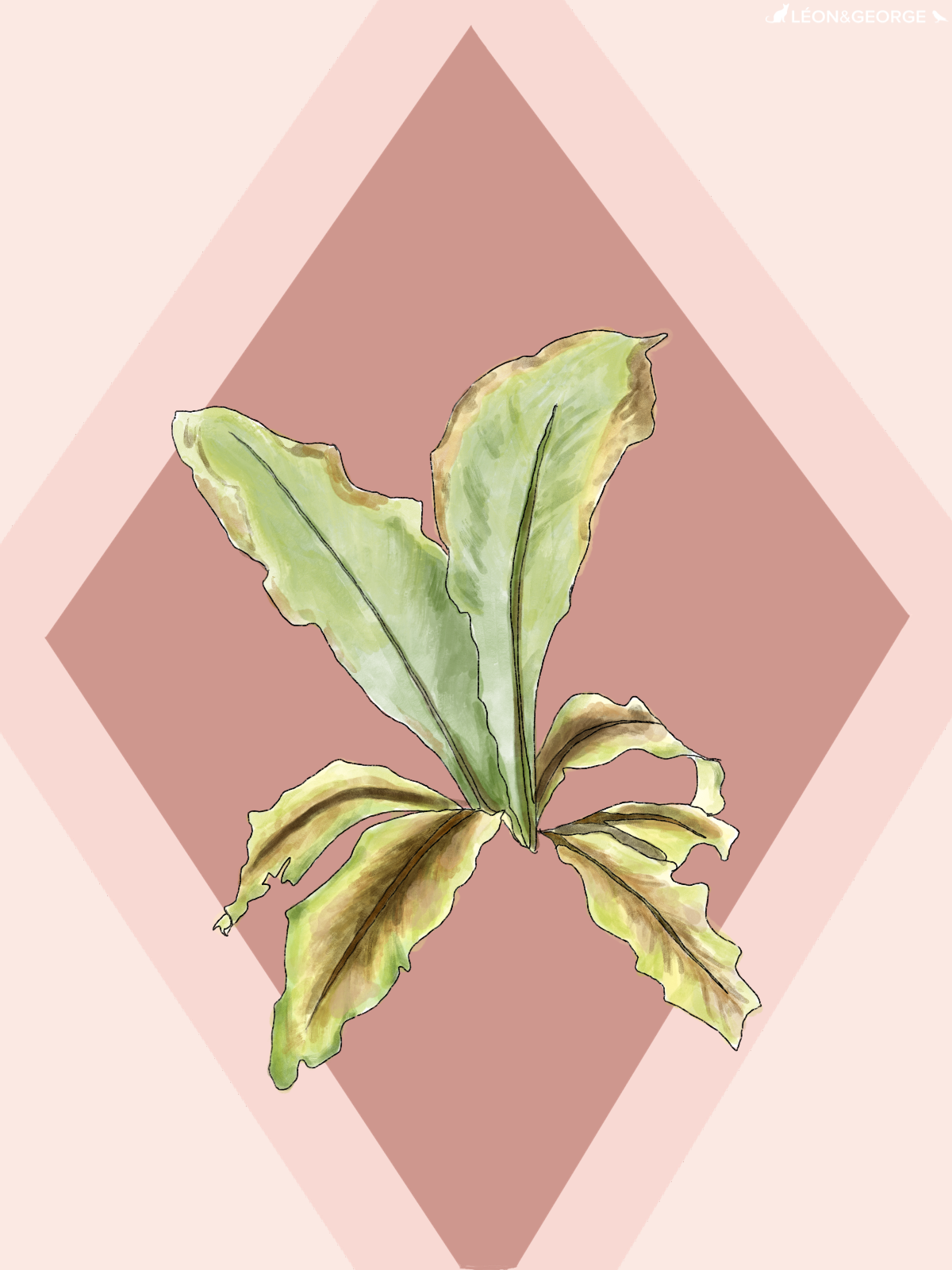
Brown Leaf Tips
Crispy, brown edges on fronds
Causes: Low humidity, drafts, underwatering
Solutions:
- • Increase humidity levels
- • Move away from air vents
- • Use pebble tray or humidifier
- • Trim brown tips with clean scissors
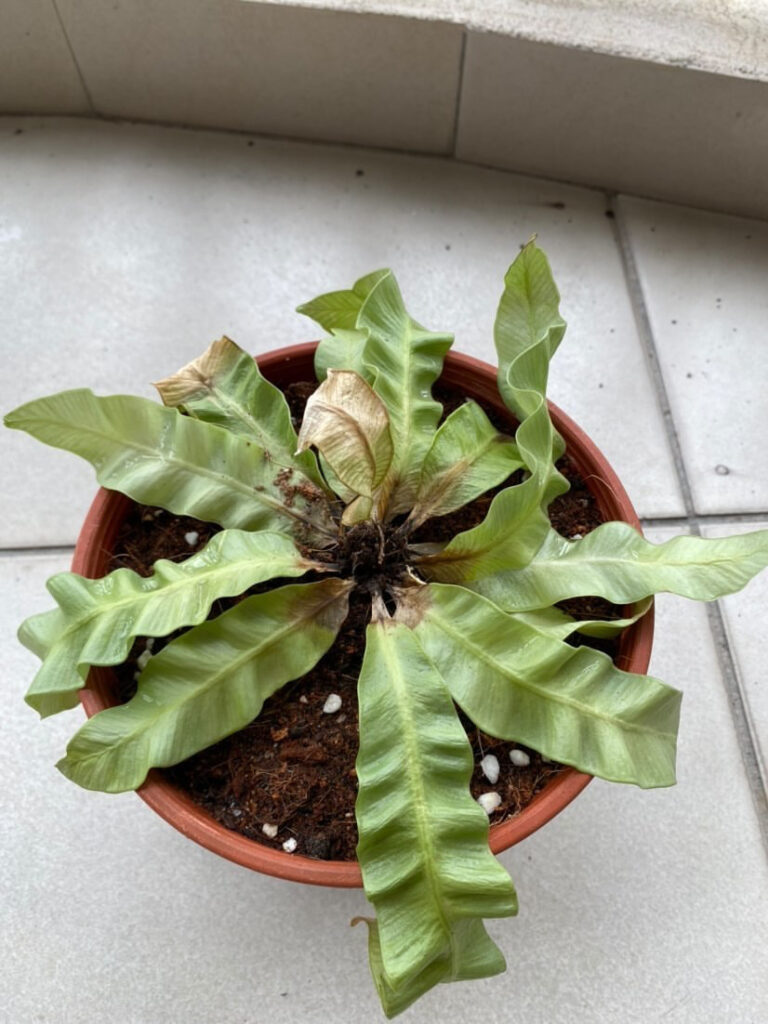
Curling Leaves
Fronds curling inward
Causes: Insufficient moisture, low humidity
Solutions:
- • Check soil moisture regularly
- • Increase watering frequency
- • Boost environmental humidity
- • Ensure consistent moisture
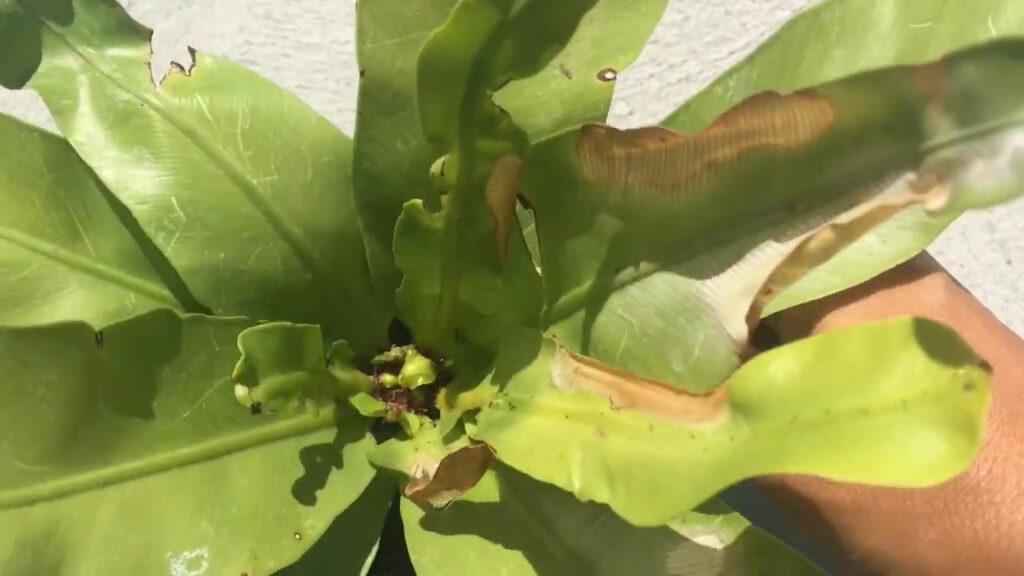
Crown Rot
Center of plant turning black/brown
Causes: Watering into center, poor drainage
Solutions:
- • Never water directly into crown
- • Improve drainage immediately
- • Remove affected tissue
- • May need to propagate healthy parts
Propagation Guide

Bird’s Nest Ferns propagate through spores found on the undersides of mature fronds
Spore Propagation Steps
Identify mature fronds with brown, fuzzy spores on the undersides
Cut frond and place in paper bag for several days to collect spores
Prepare moist sphagnum moss in a shallow dish
Sprinkle spores over moss surface evenly
Cover with plastic wrap to maintain humidity
Place in warm, shaded location and wait for germination (2-4 weeks)
Propagation Tips
Best Time: Spring when spores are most viable
Success Rate: Be patient – fern propagation takes time and practice
Alternative: Purchase small plants from nurseries for easier success
Patience Required: Young ferns may take months to years to reach mature size
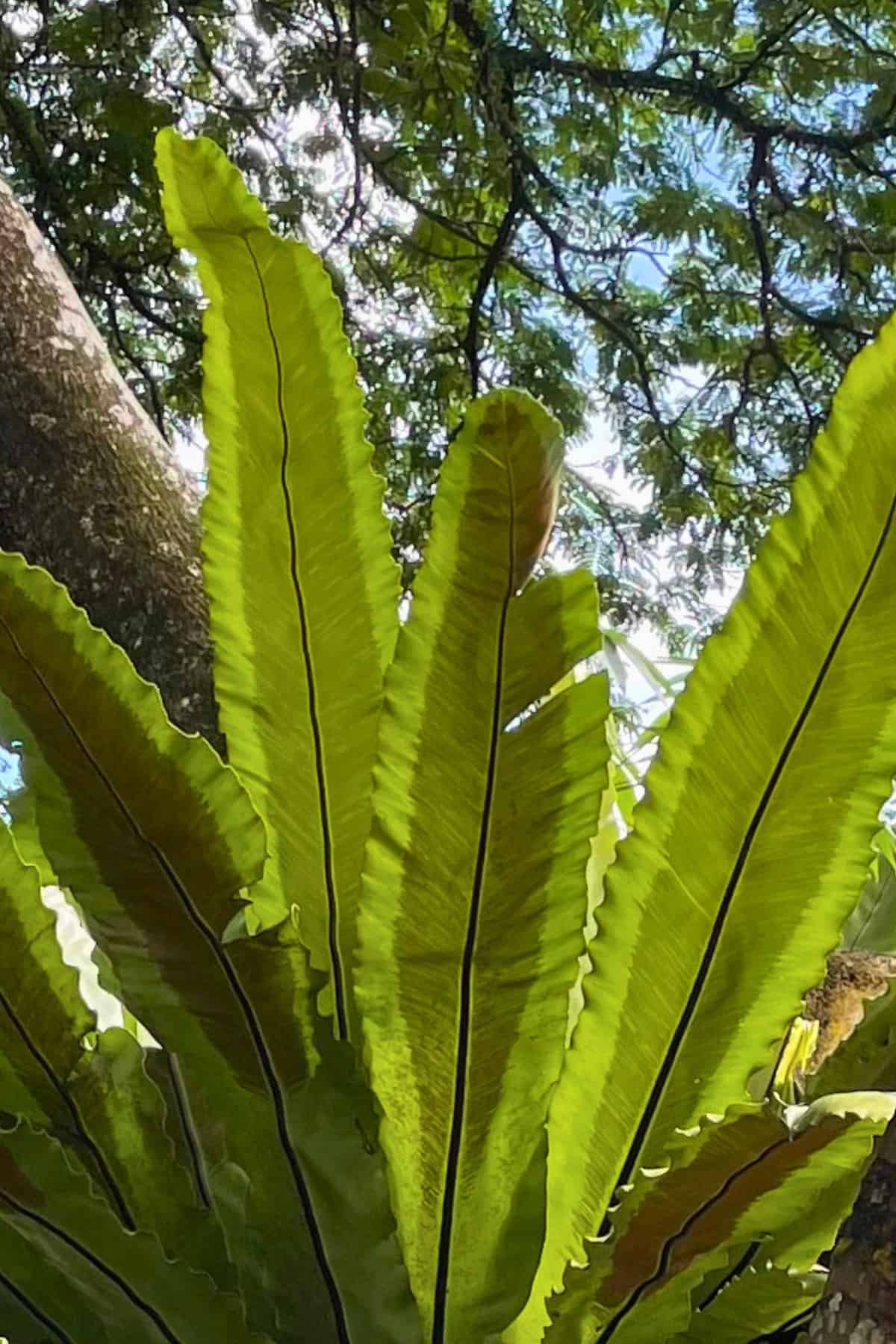
Seasonal Care Calendar
Spring
- • Resume regular fertilizing
- • Increase watering frequency
- • Best time for repotting
- • Check for new growth
Summer
- • Continue monthly feeding
- • Monitor for pests
- • Maintain high humidity
- • Water more frequently
Fall
- • Reduce fertilizing
- • Begin decreasing water
- • Collect mature spores
- • Prepare for winter
Winter
- • Stop fertilizing
- • Water less frequently
- • Maintain humidity
- • Protect from cold drafts
Quick Reference Card
Perfect Conditions
- • Bright, indirect light
- • 60-80°F temperature
- • High humidity (50-60%)
- • Moist, well-draining soil
- • Monthly fertilizing in growing season
Warning Signs
- • Yellow leaves = overwatering
- • Brown tips = low humidity
- • Curling leaves = underwatering
- • Pale leaves = too much sun
- • Crown rot = water in center
Plant Benefits
- • Air purifying qualities
- • Non-toxic to pets
- • Low maintenance
- • Beautiful foliage
- • Thrives in bathrooms
:strip_icc()/birds-nest-fern-care-4769991-hero-bd49308d33514130ae06e79696de49aa.jpg)
With proper care, your Bird’s Nest Fern will thrive and bring tropical beauty to your home. Happy Gardening…

